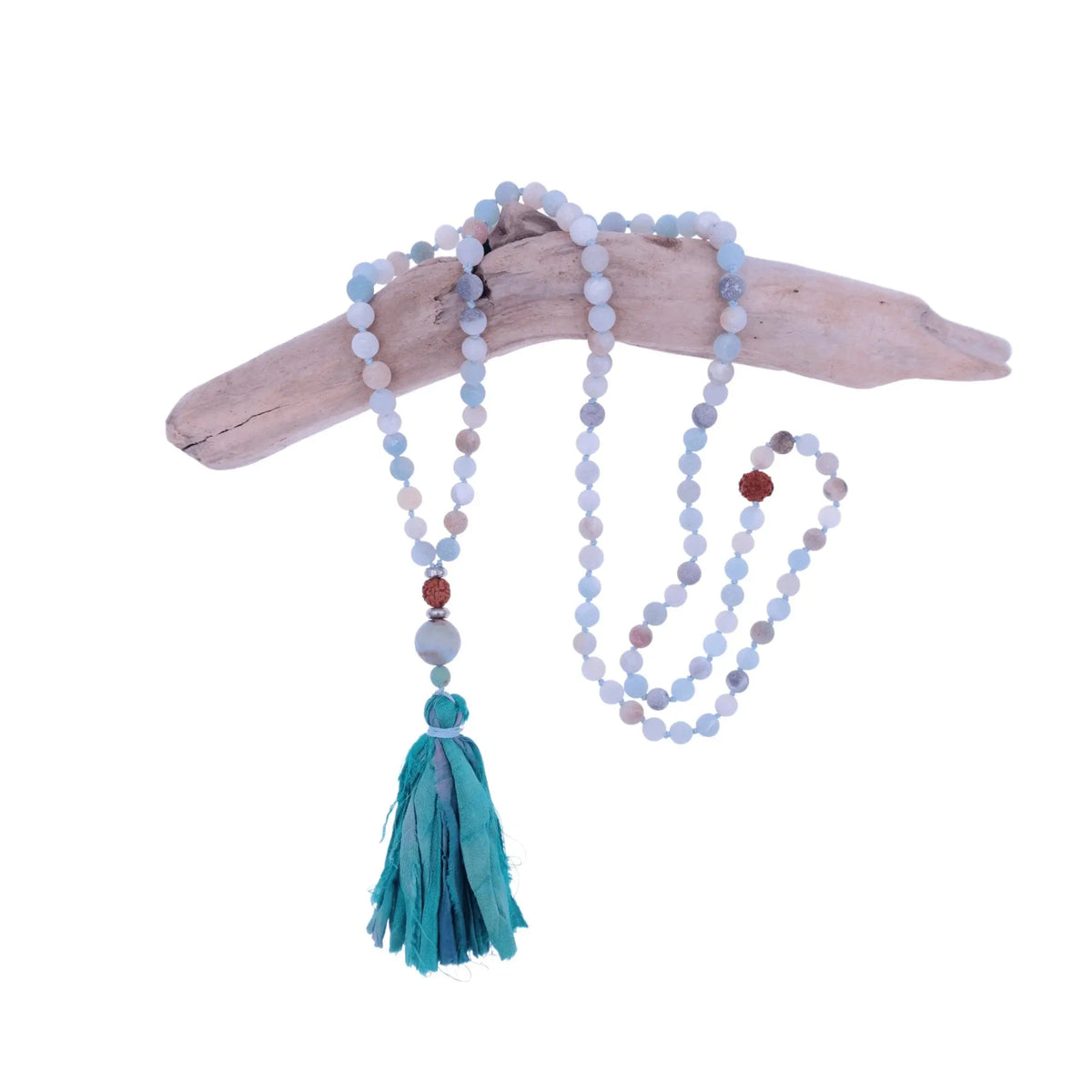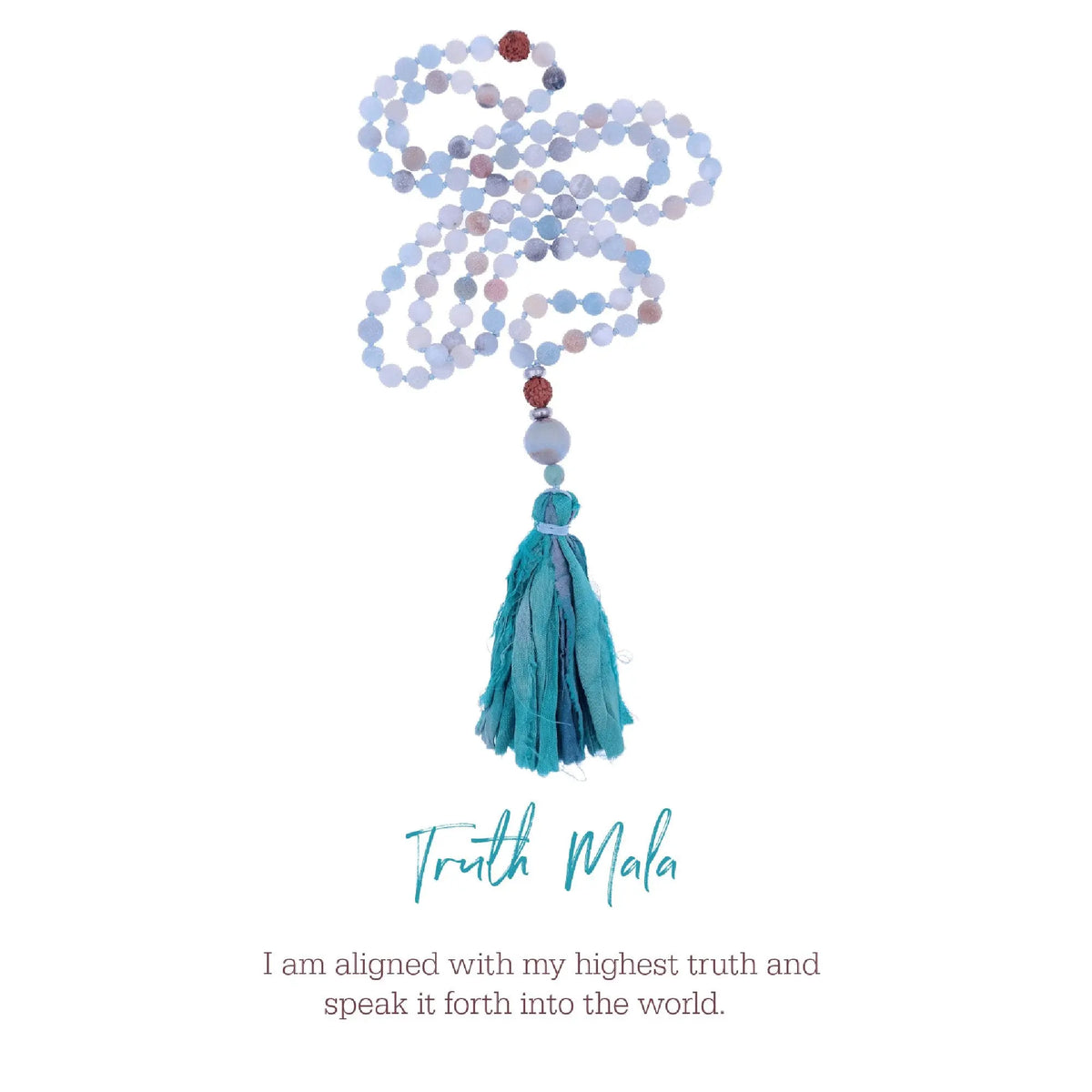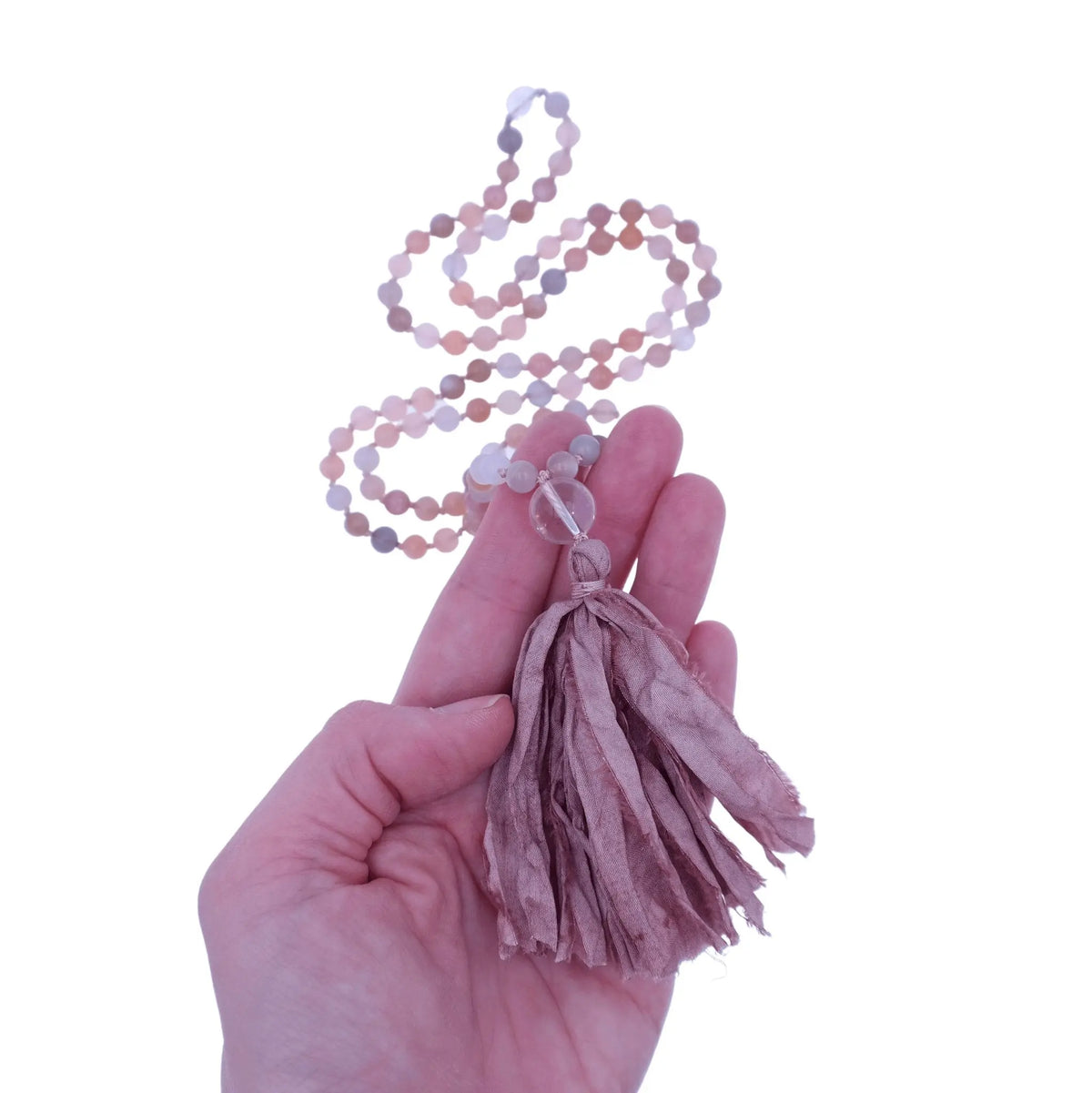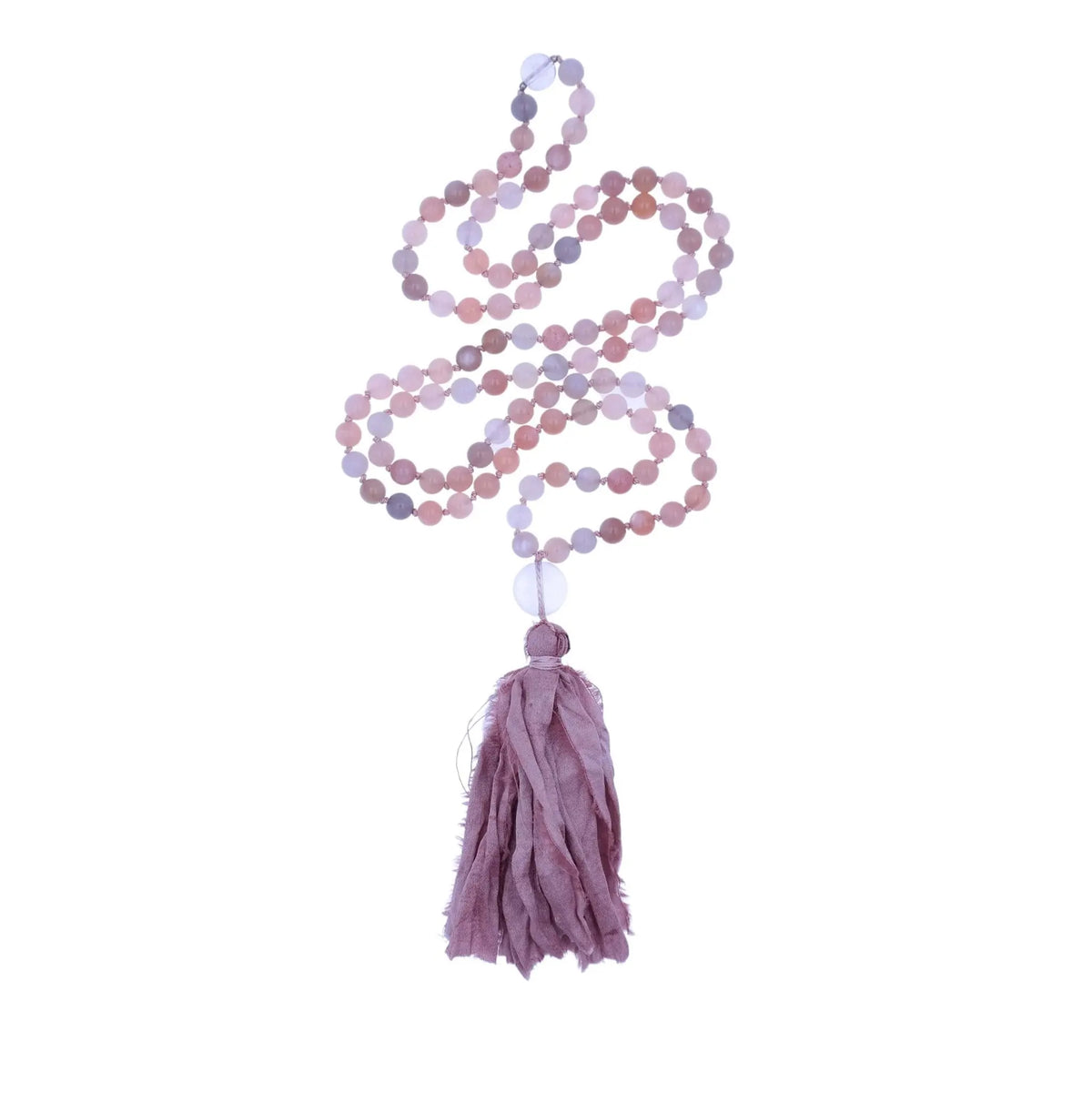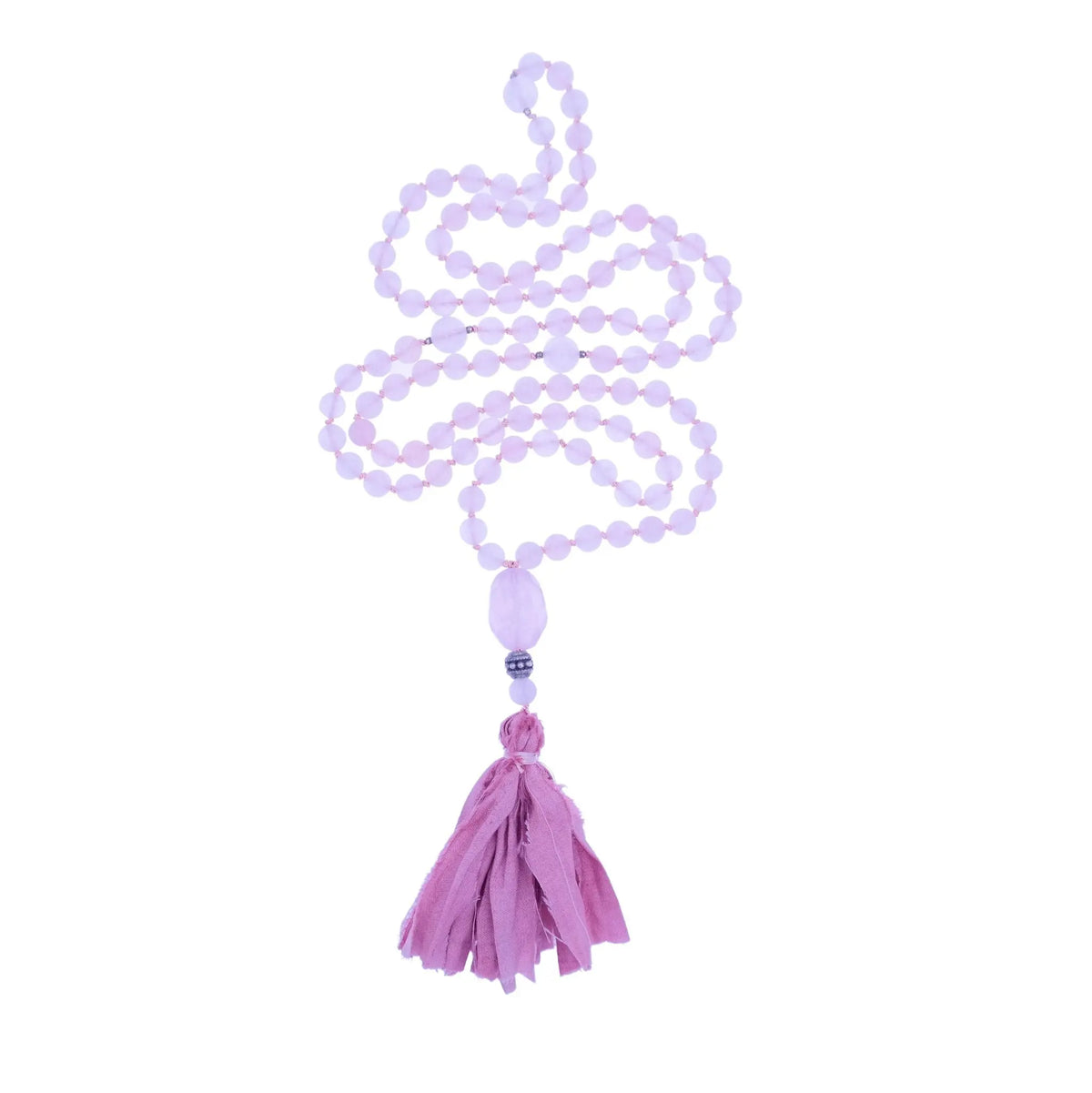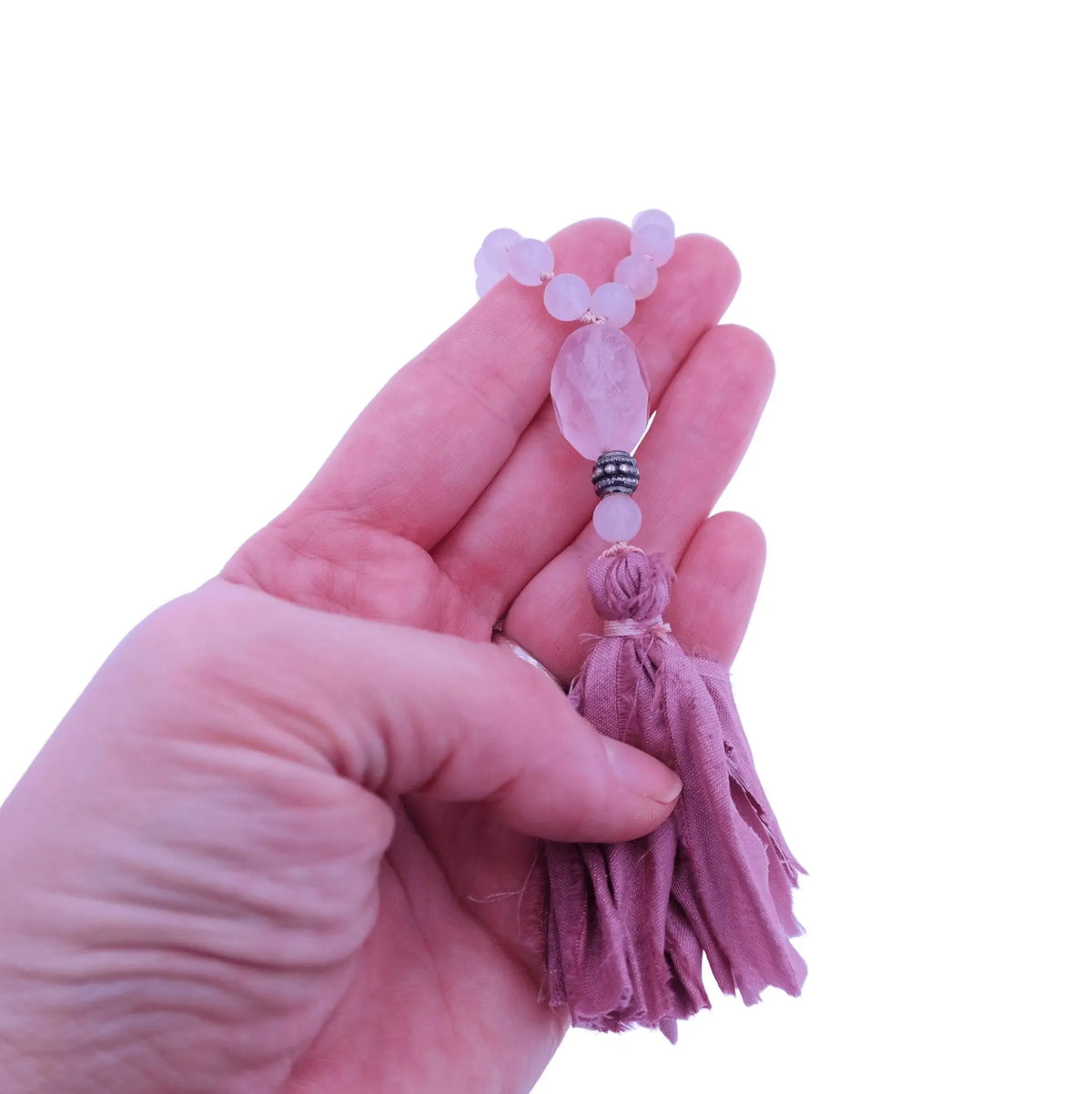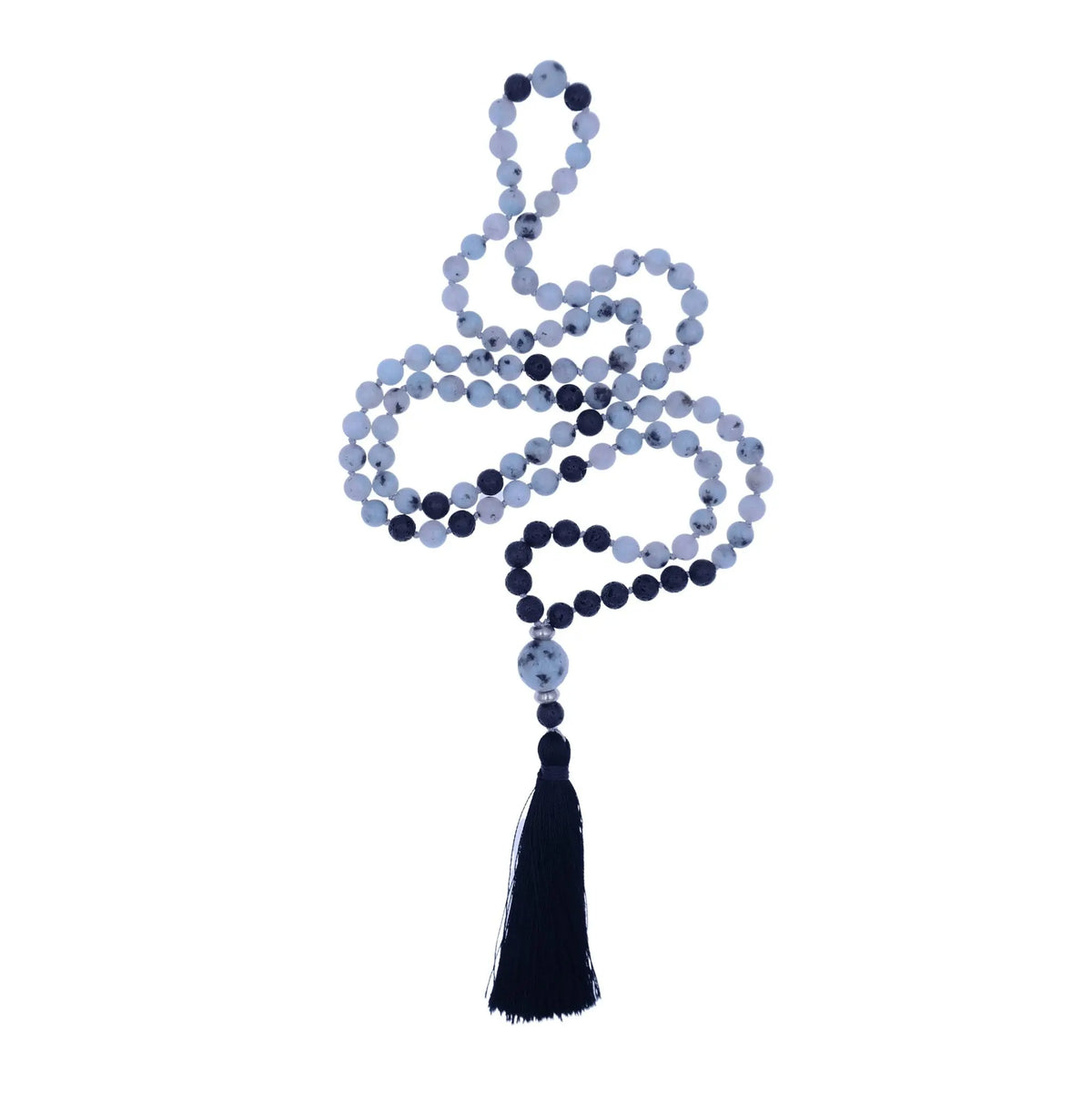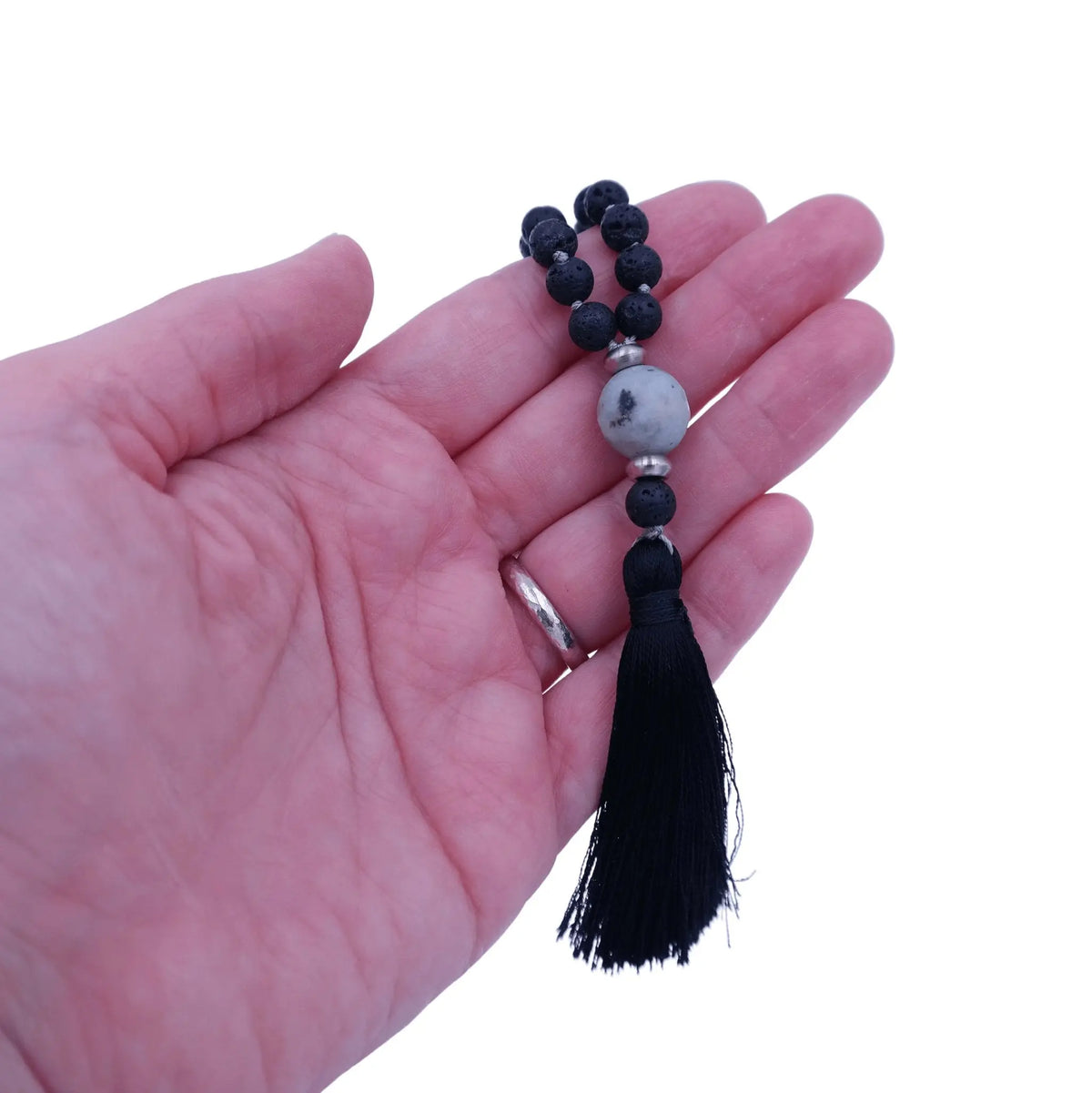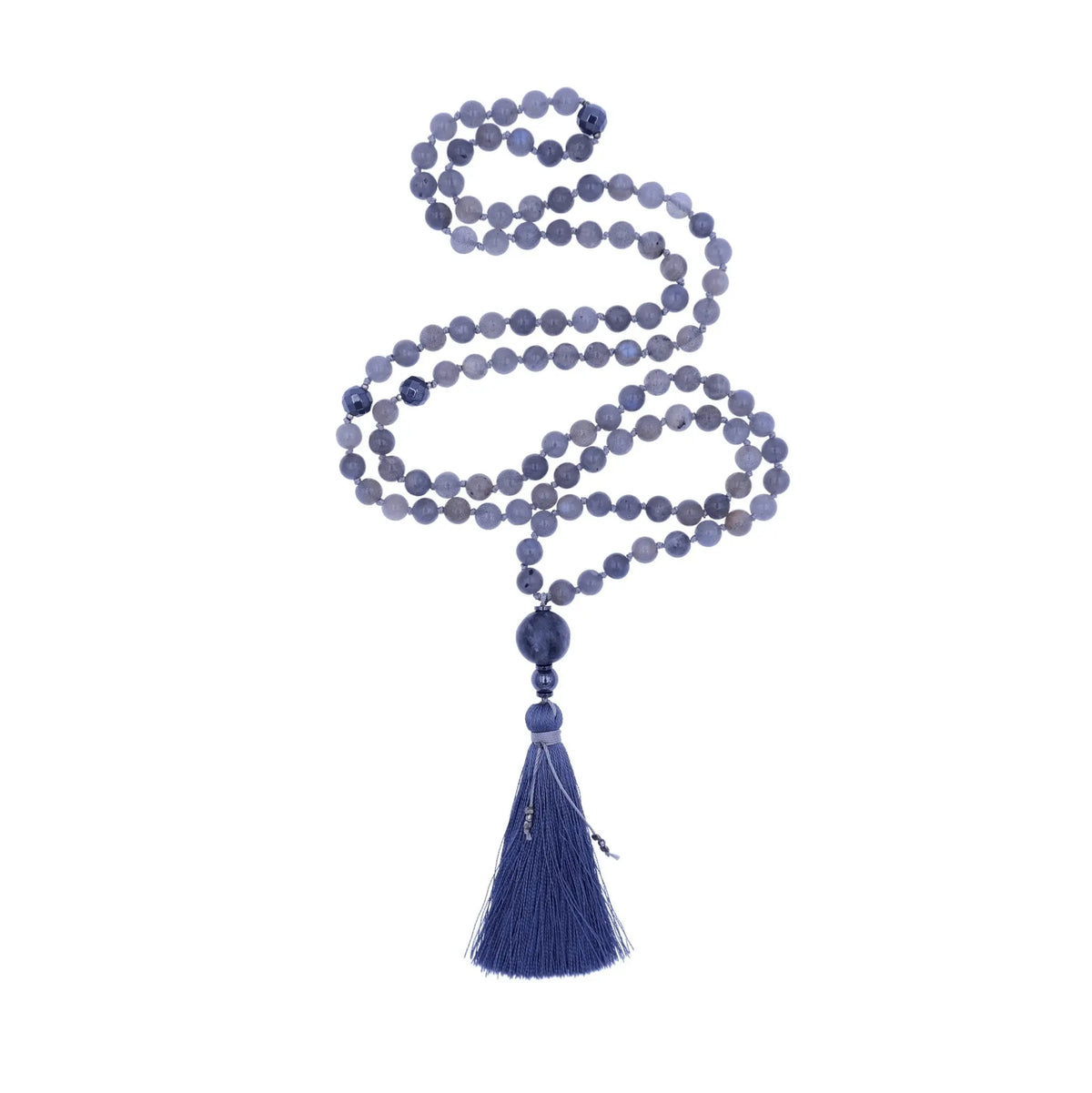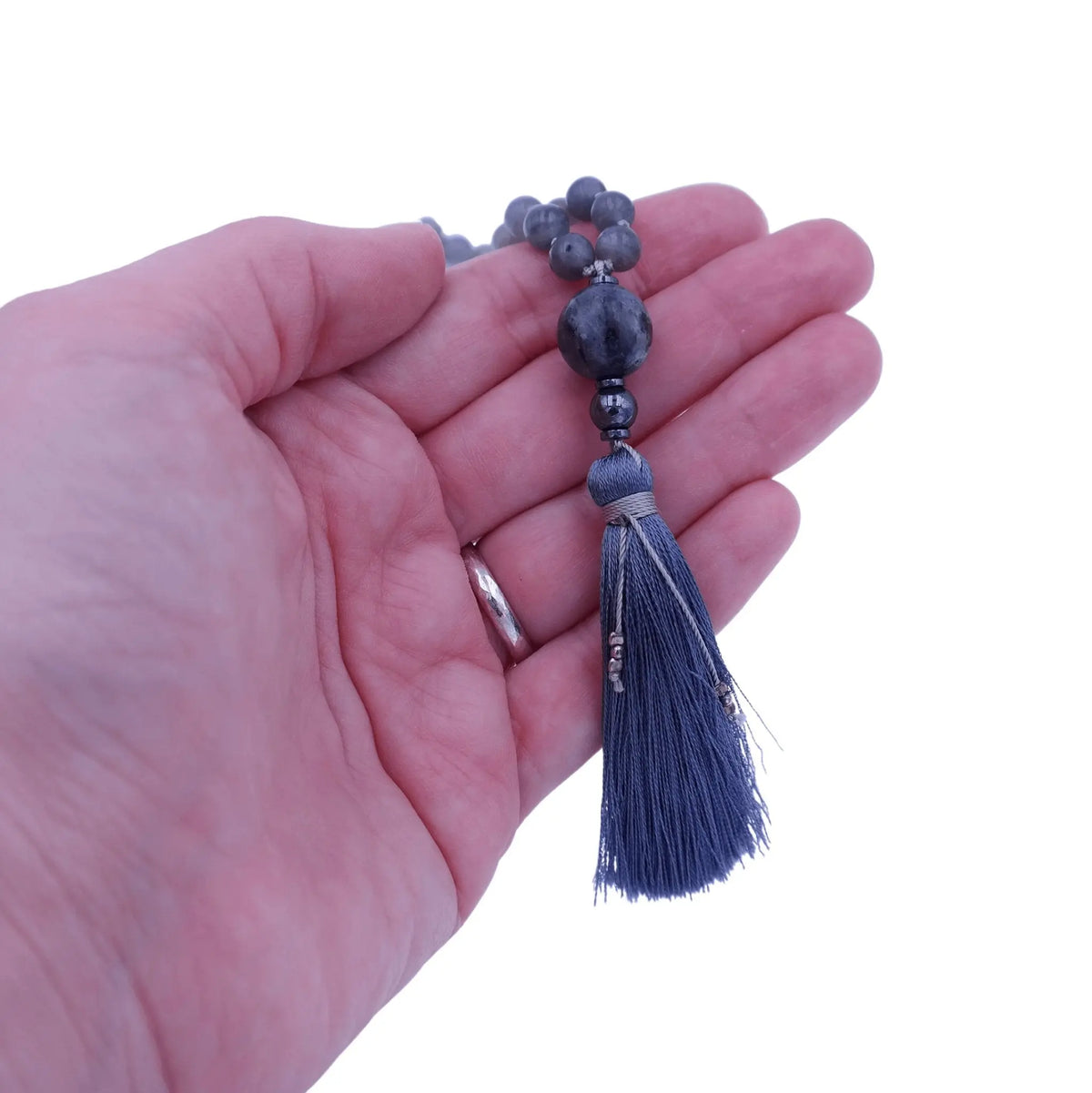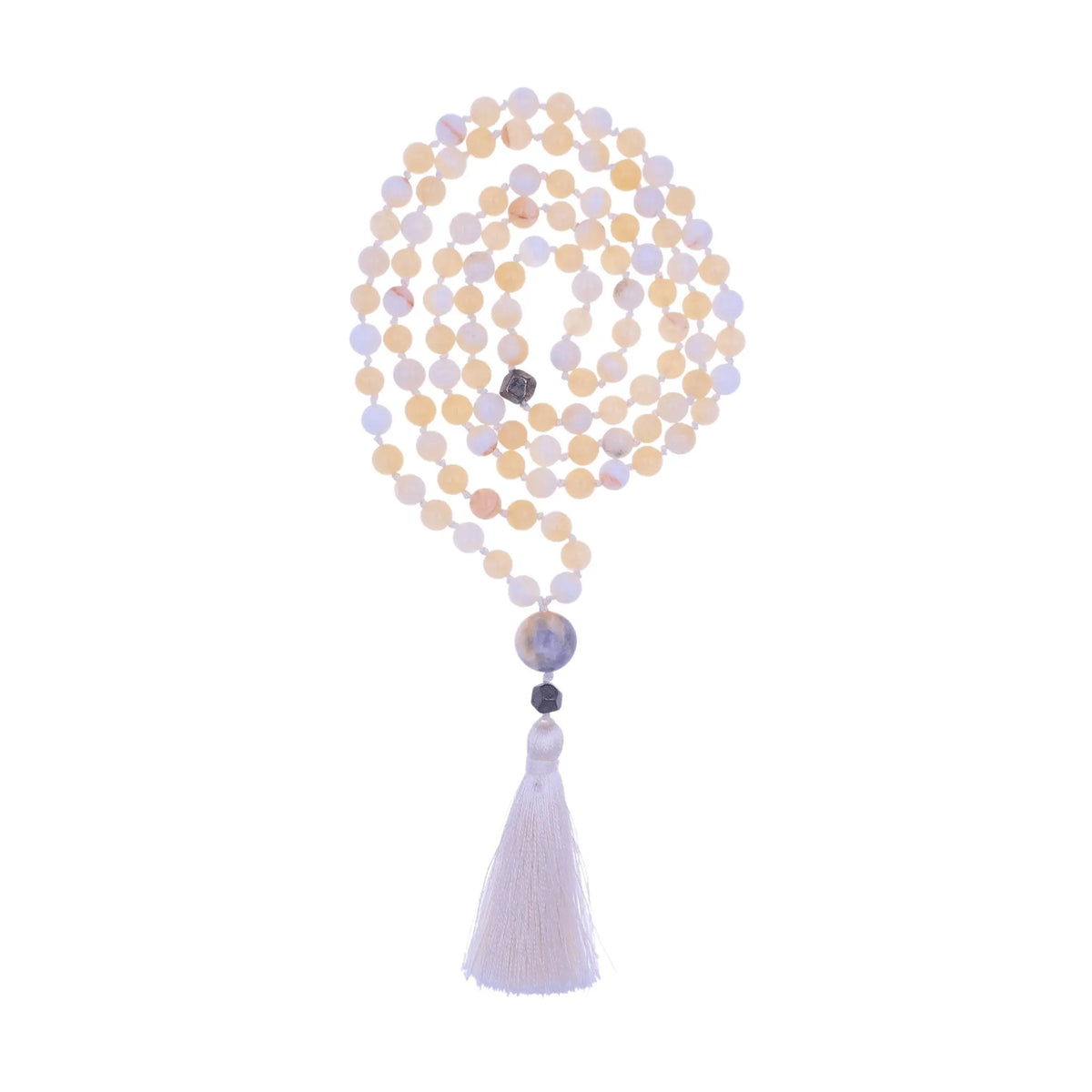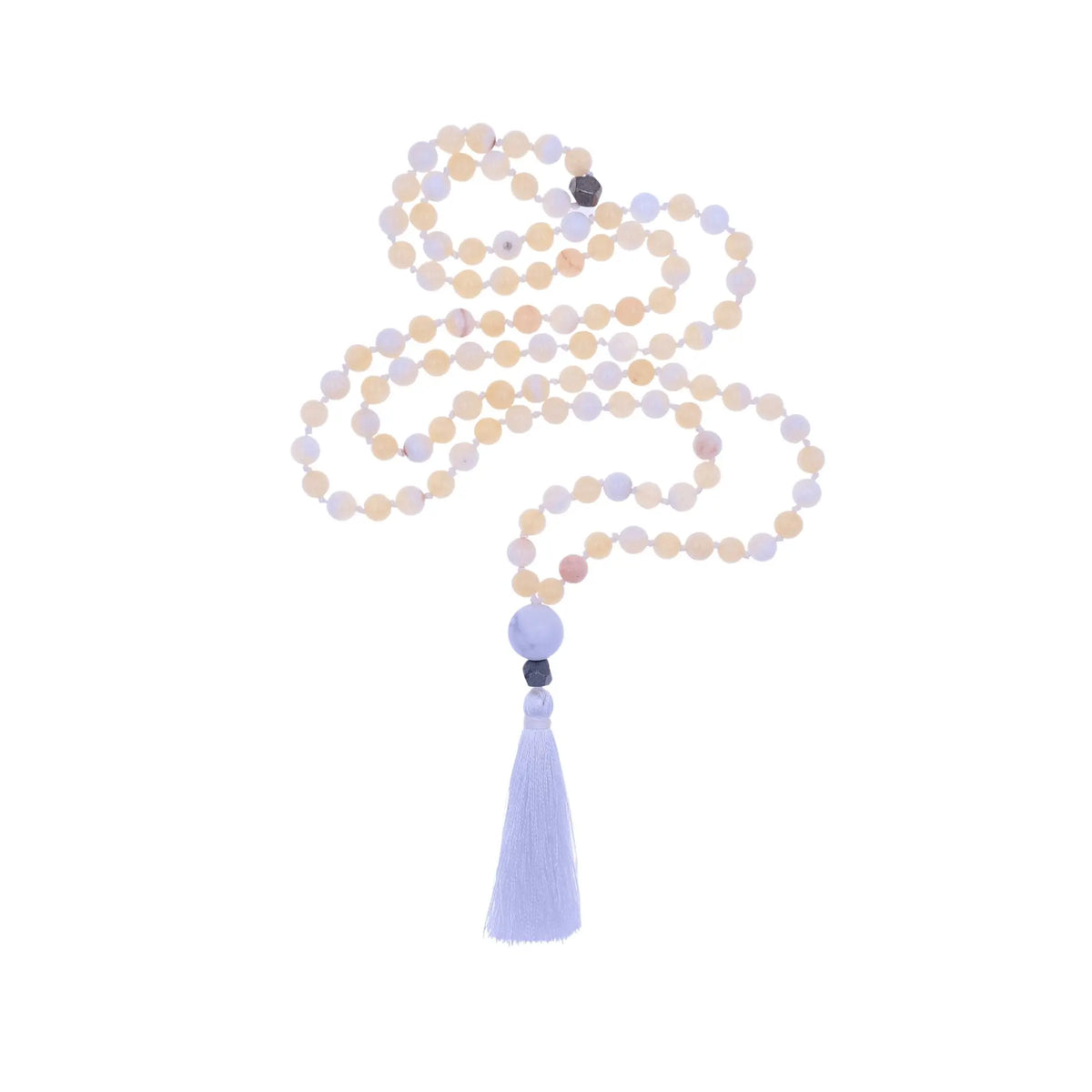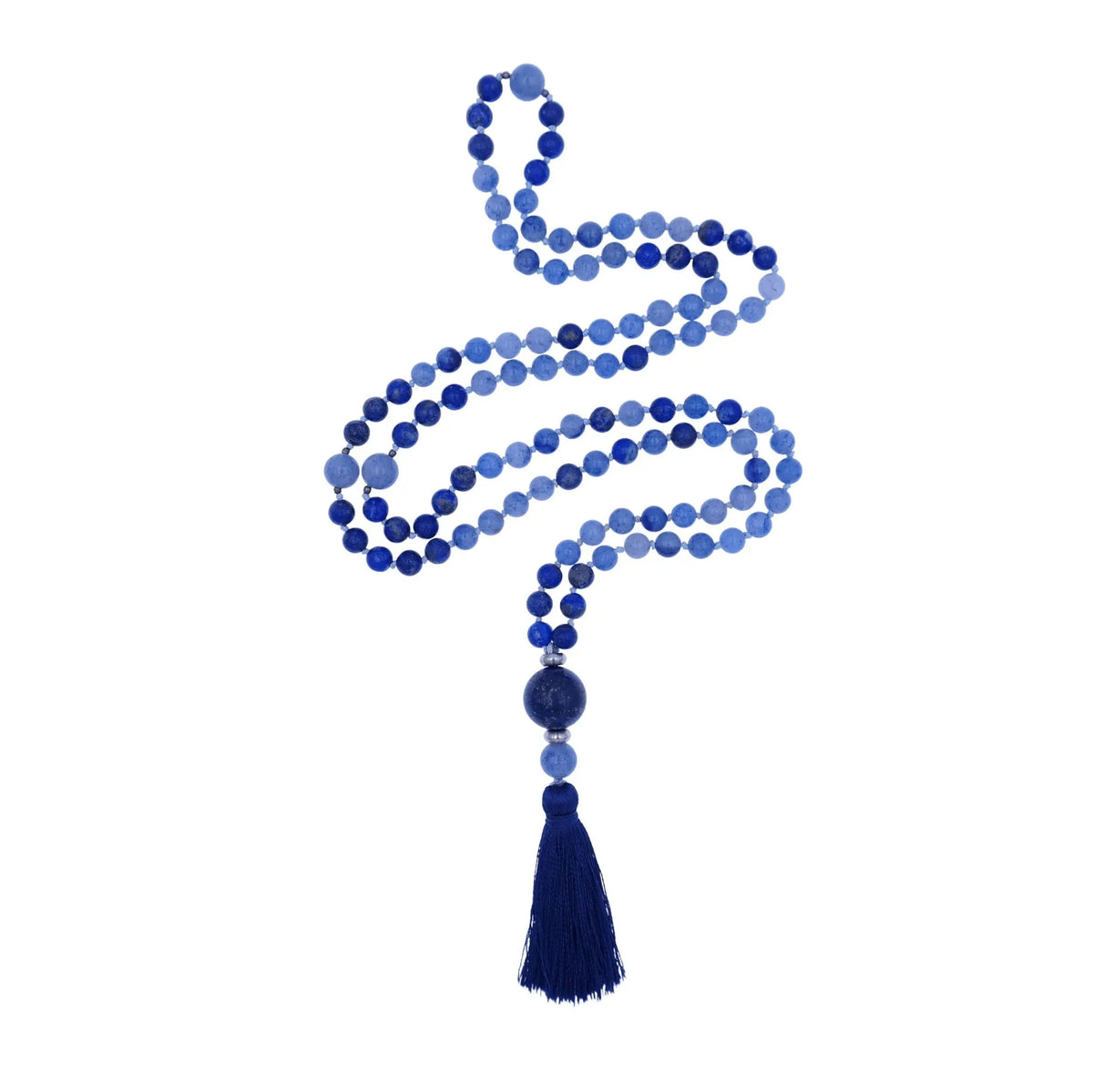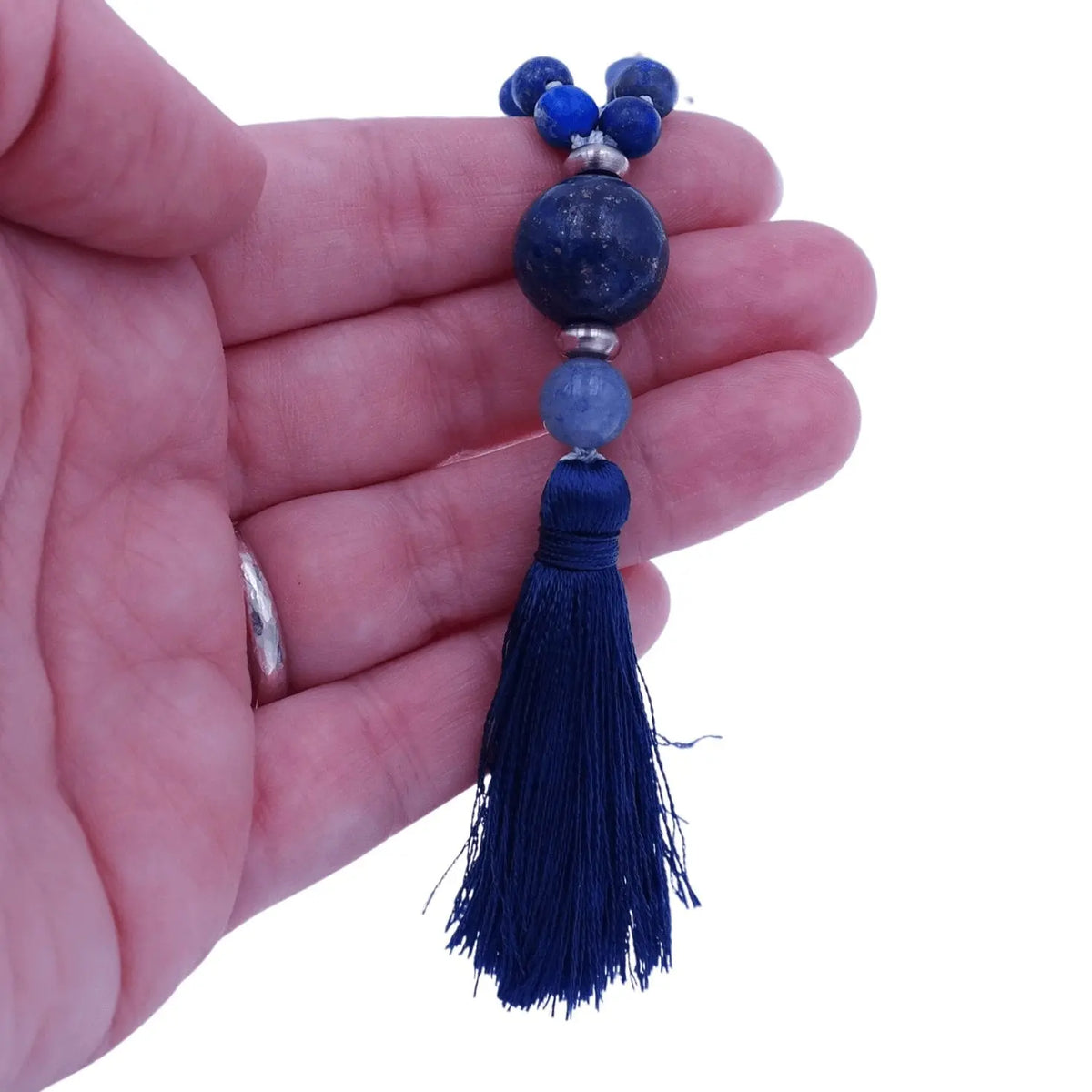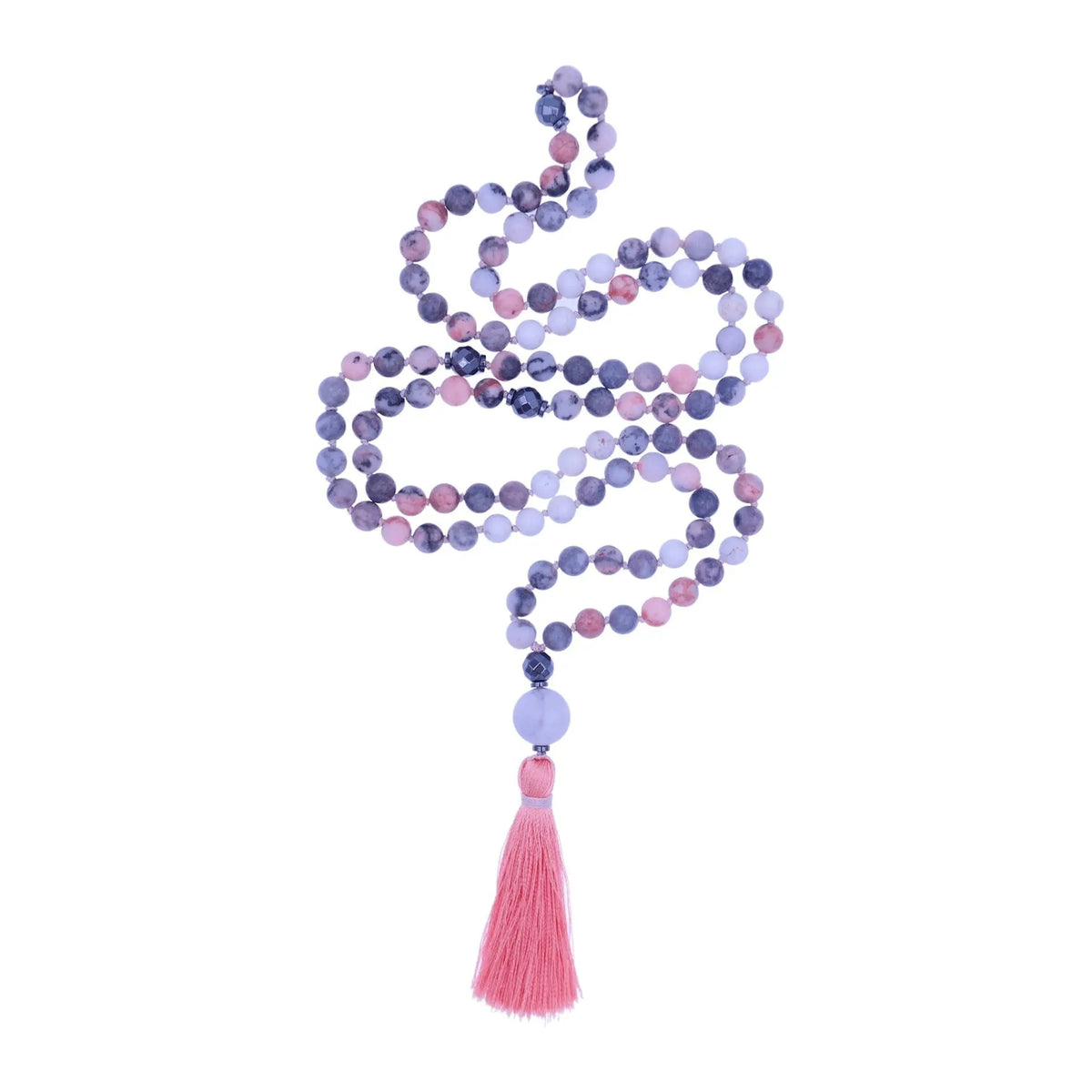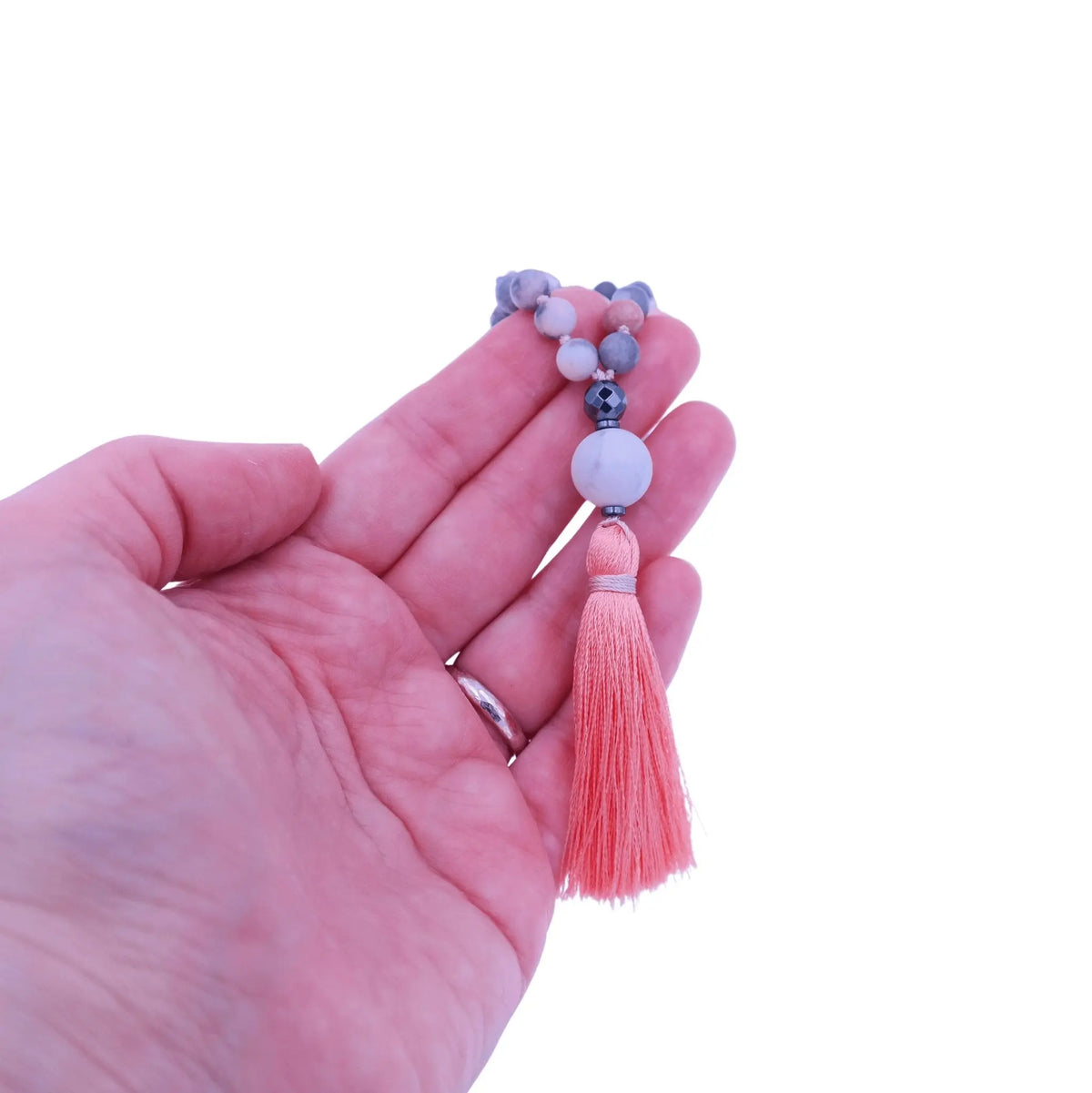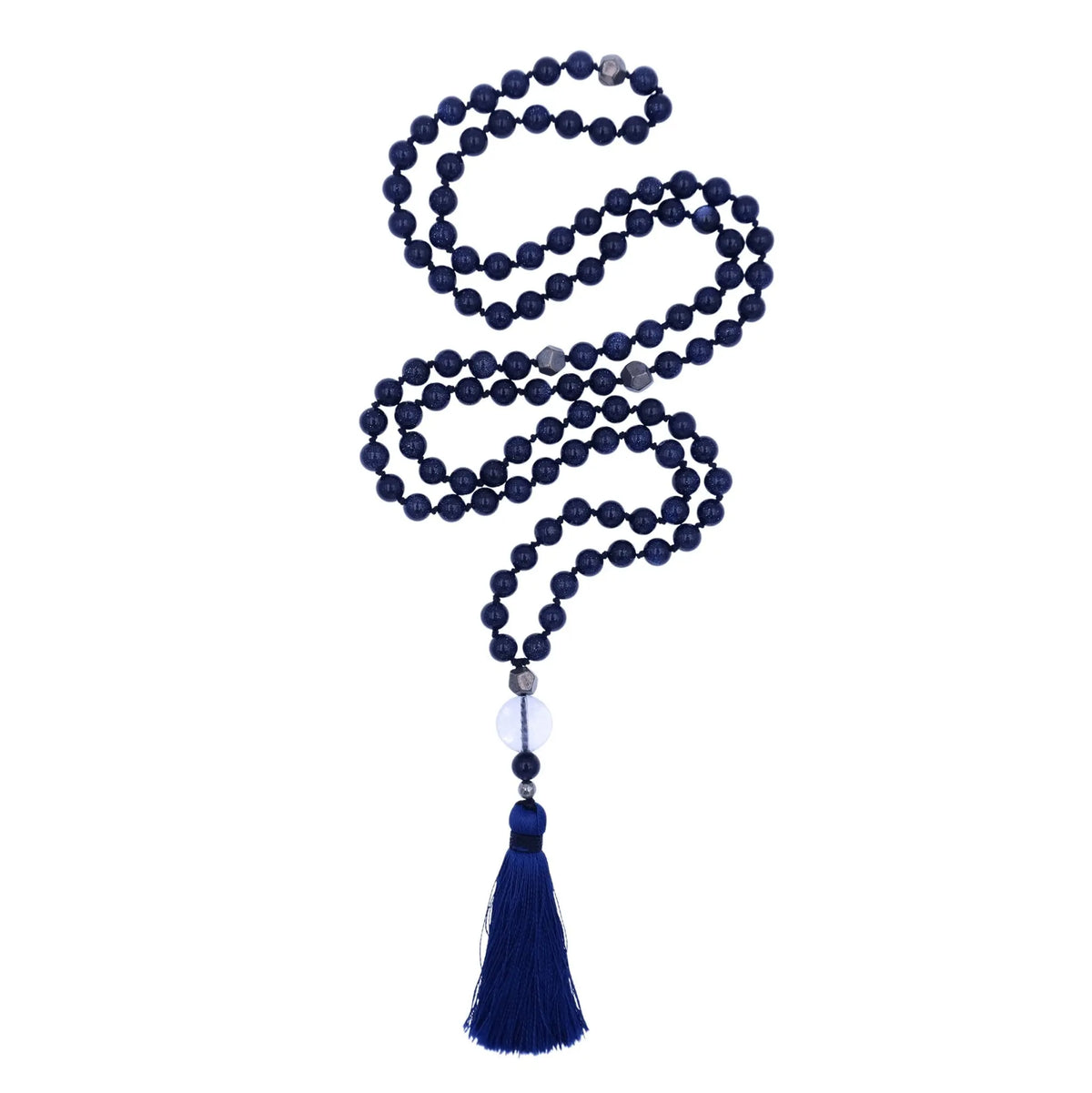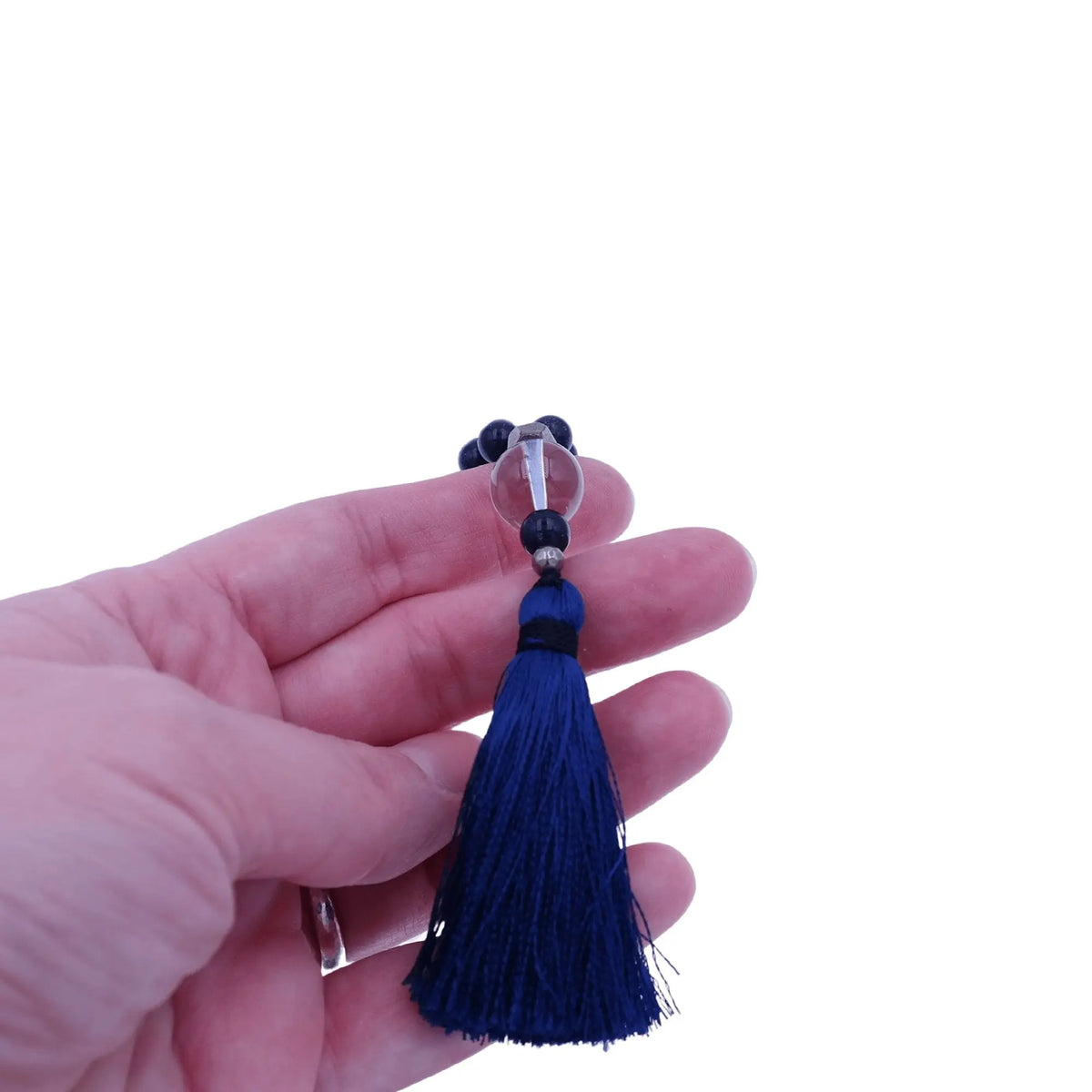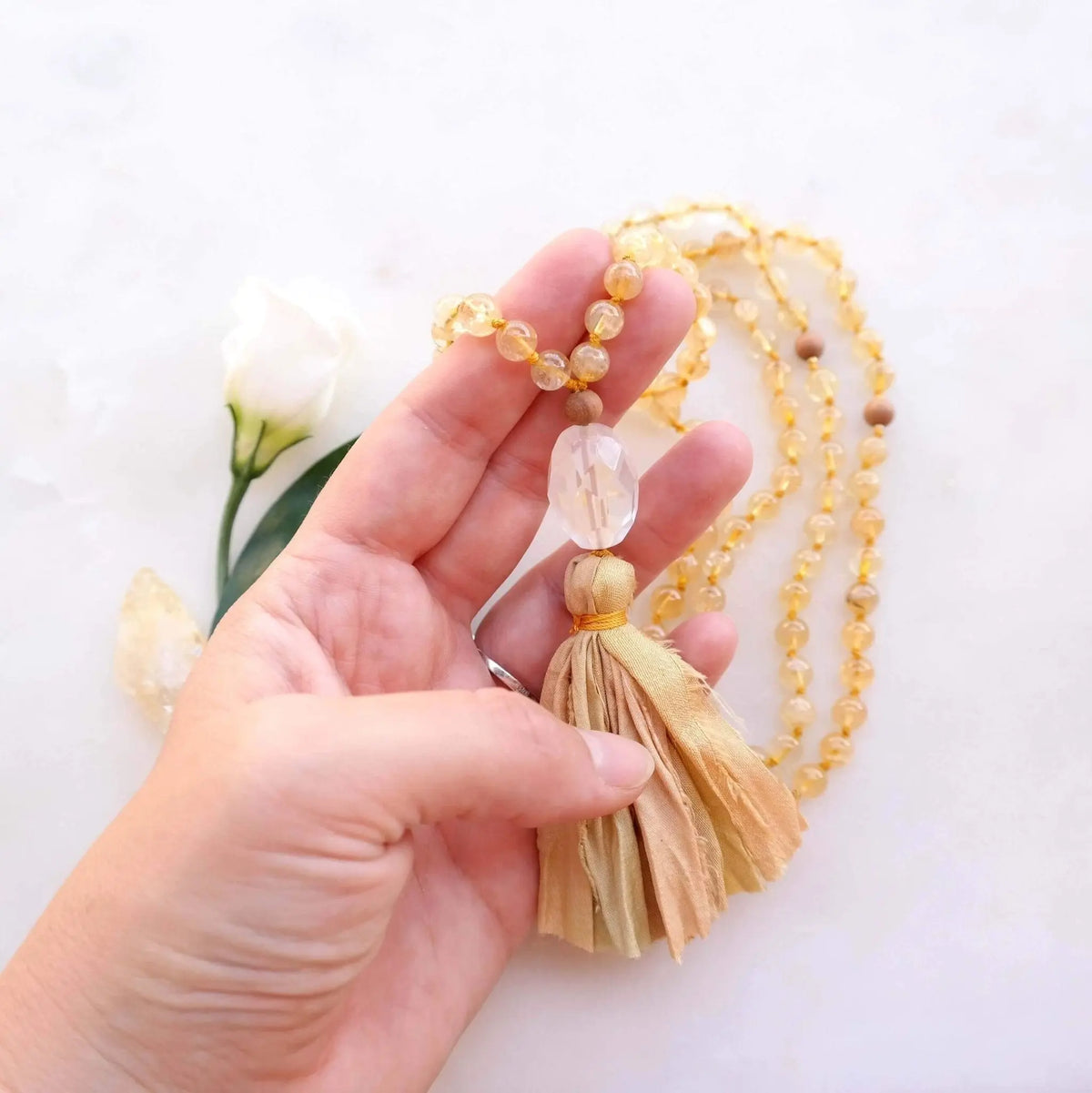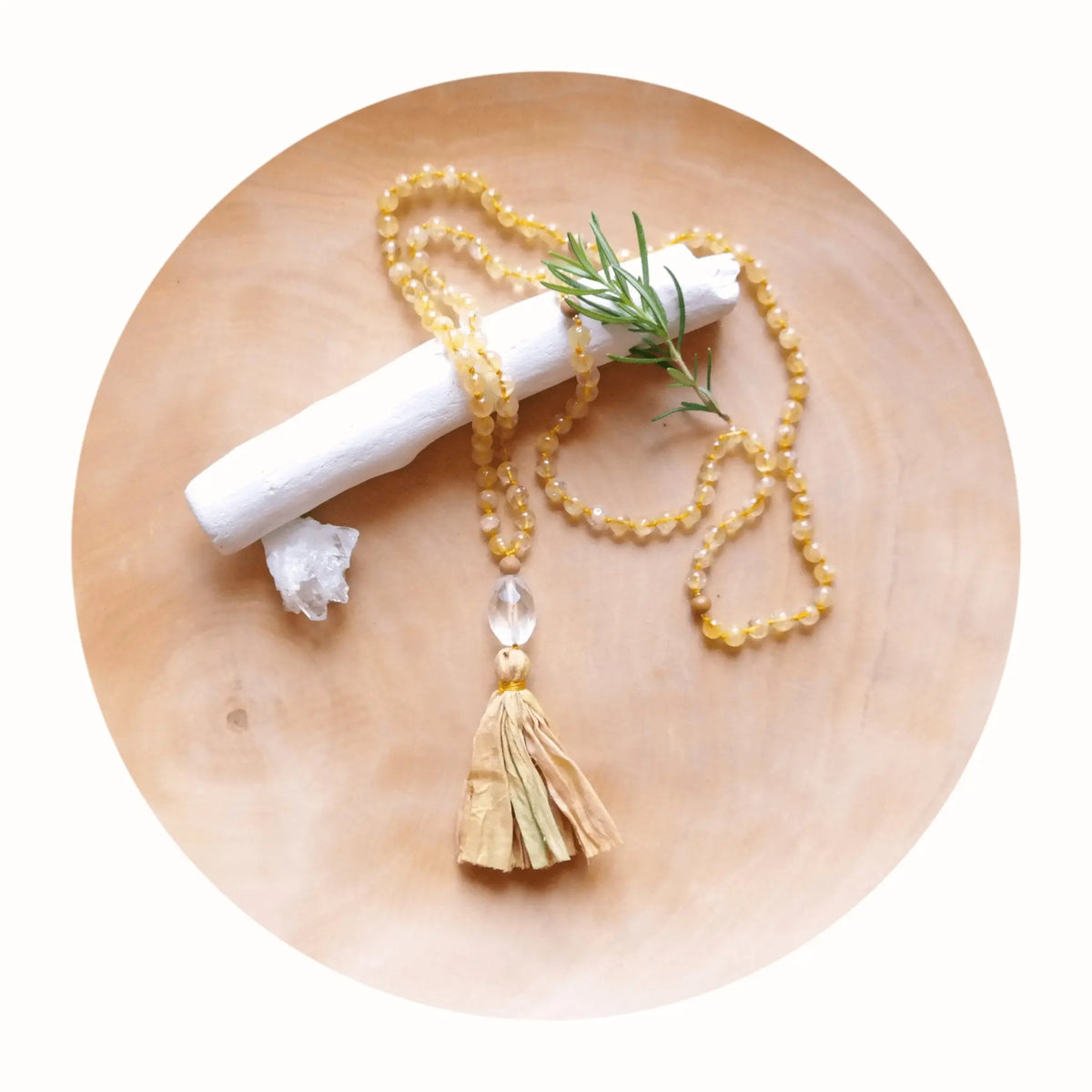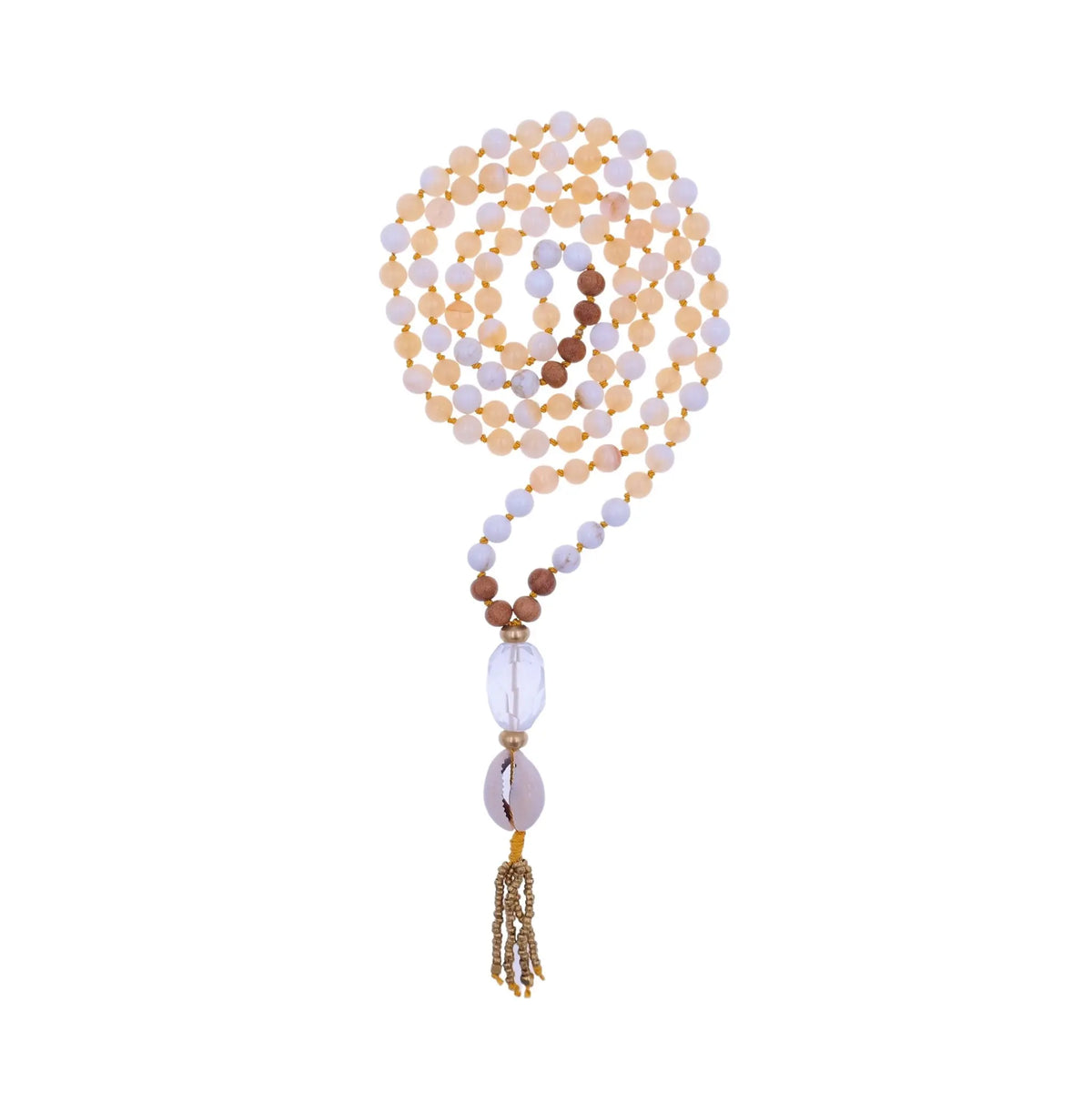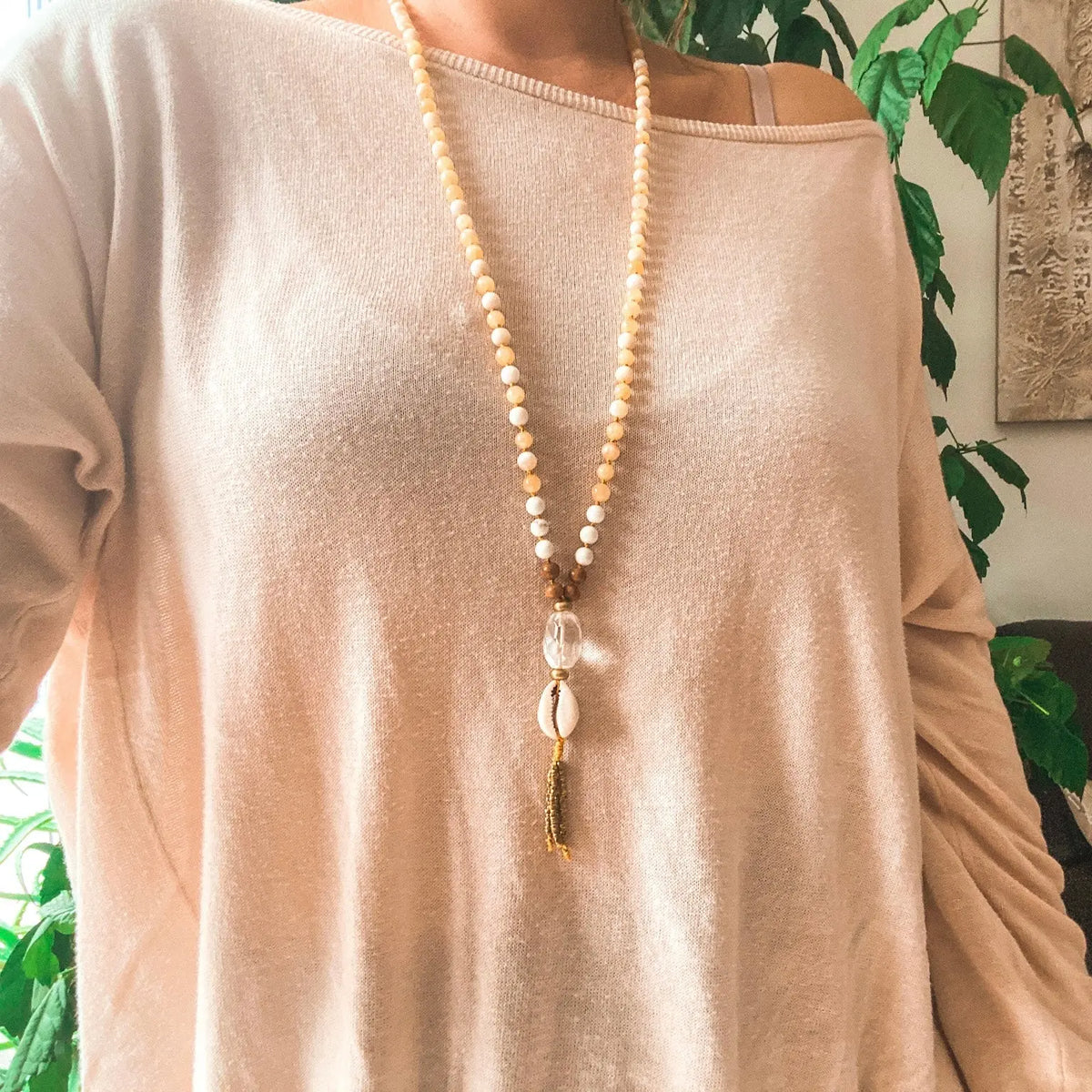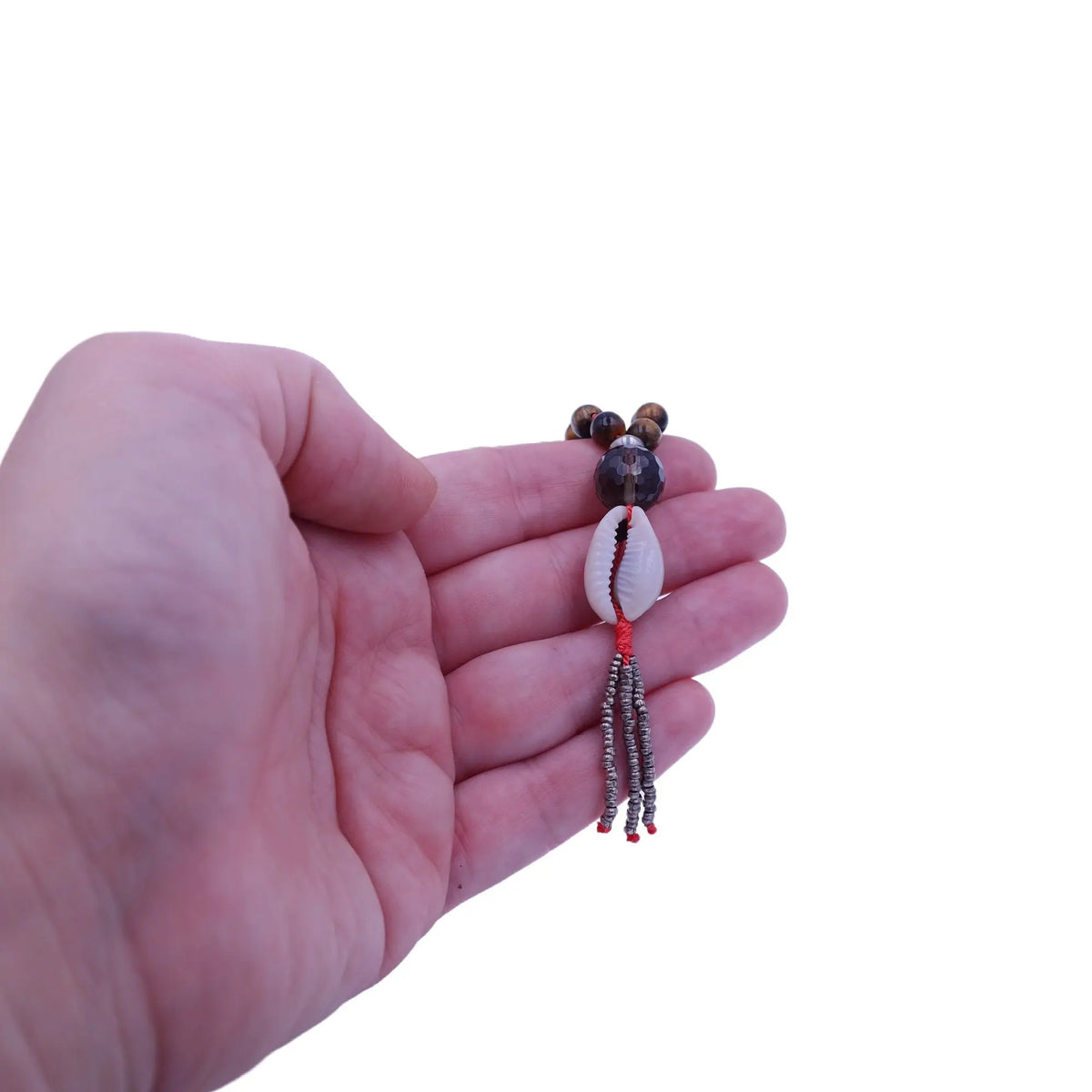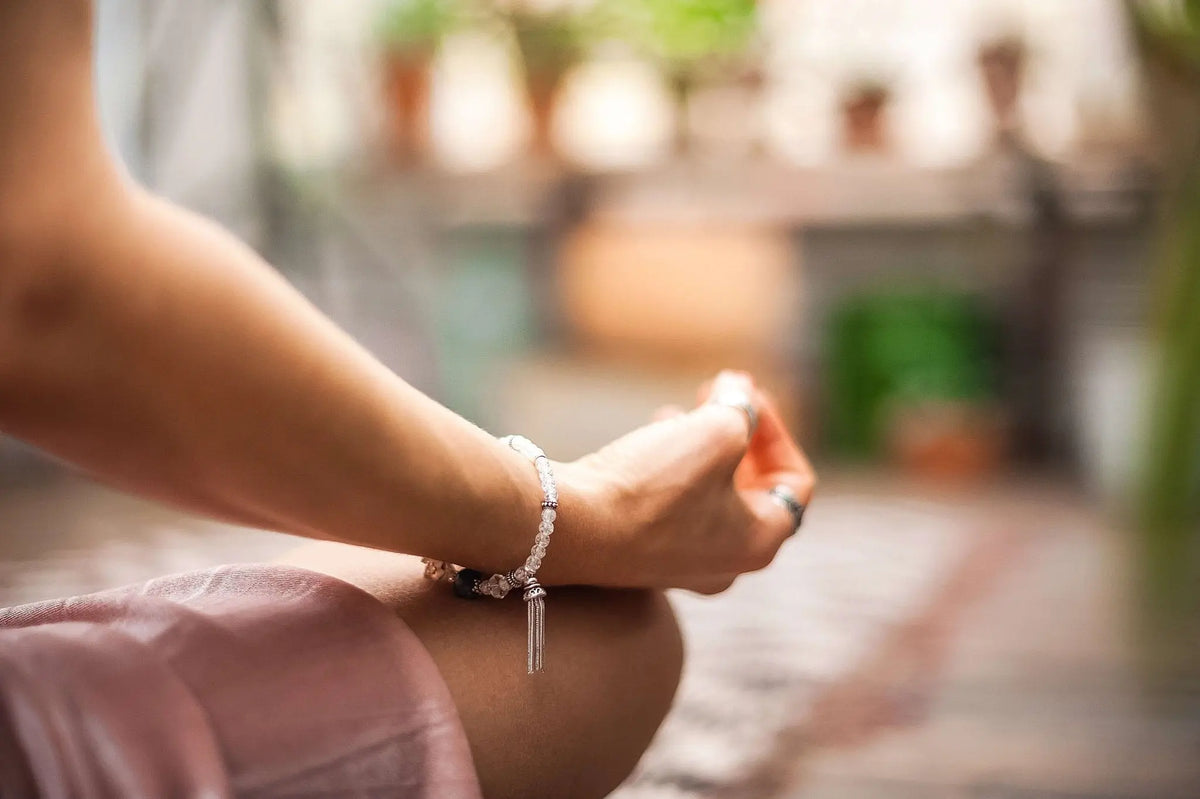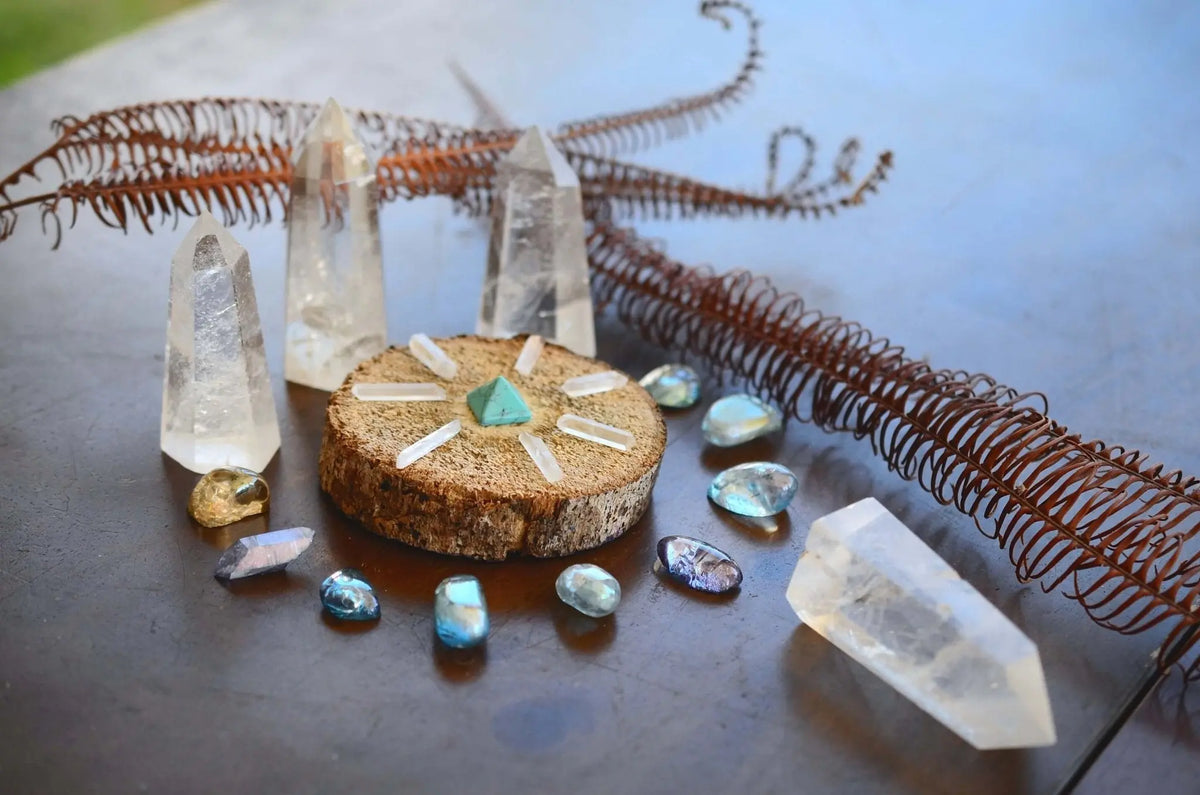The 'Composition of a Mala' necklace is a core element in Buddhism and Hinduism. Understanding its parts, its construction, and its significance can be quite enlightening and spiritually enriching. It's not just a piece of jewelry but a tool for meditation and a symbol of principles each bead represents.
Beads
A full mala consists of 108 beads, but you can use factors, such as 54, 36, 27 or 18 to create shorter malas that can also be worn as a bracelet. Traditional malas are made of wood beads like sandalwood or seeds, such as rudraksha seeds. Now it’s also more and more popular to add gemstones or crystals or make a mala entirely of gemstones or crystals. They add even more energetic significance to your mala.
Counter beads/ Marker beads
In Tibetan tradition an additional bead is added after every 27th bead, which divides the mala into 4 intervals. In some case you will also find the counter bead, or also called marker bead, after every 36th or 54th bead. They are there to help you stay focus and act as a reminder, in case your mind wanders off during meditation. At Gypsy Soul Jewellery, all our mala necklaces include at least one counter bead.
Knots
The knots between each bead make the mala stronger and they also provide the perfect space between each bead, so they don’t touch each other and crack over time. The knots also provide enough space for Japa Meditation, to count the repetition of a mantra. However, they also represent our challenges in life, as well as the divine link present among all living beings in the universe. It shows the bond and interconnectedness of everything in the Universe, as everything is connected, “tied” together.
Guru Bead
When looking at the different parts of the mala, one bead that stands out is the bigger bead at the end of the mala necklace. The guru bead is at the bottom of your mala, the bead that the tassel is attached to. If the mala doesn’t have any additional counter beads, the guru bead will be the 109th bead of your mala. It symbolizes the teacher or guru which supports you. It honors the student-guru relationship, your teacher in life and within yourself. In Sanskrit the word also means “bringer of light”. Once you did a full cycle of repetition of your mantra, this is the bead where you would pause, reflect and give thanks to your teachers and the teacher within you. Then reverse the process if you want to continue. You will never skip over the guru bead, as it’s regarded as disrespectful.
Tassel
The tassel is a string of beads at the bottom of the mala. The strings of the mala come together and literally bind the tassel. A pre-made tassel that is attached and added to the finished mala does not hold the same symbology, as a tassel that is made as an integral part of the mala. At Gypsy Soul Jewellery we honor that tradition which is why all our tassels are not pre-made or loosely attached. They are always knotted with the same string of the mala necklace. The strings that come together symbolize our connection to the divine, the energies of the Universe and one another. In Buddhist culture, the tassel is the symbol of the root of the lotus blossom. It represent enlightenment and reminds the wearer of the analogy “no mud, no lotus”. For many centuries tassels are also used as a talisman which represents the fourth state of turiya, pure consciousness, the wearer’s whish to cultivate prana, which is the life force energy and one’s yearning towards moksha which means liberation.

